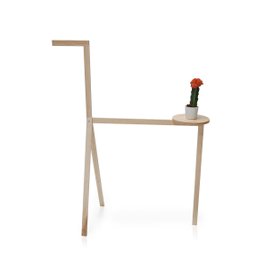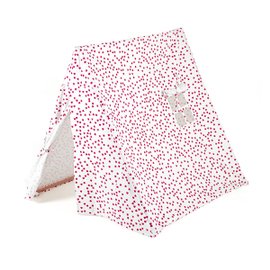Previous
The price of ecology. Design, myths and escaping to Mars


Your dream house is one step away from you.
Subscribe to our newsletter and get 10% off orders of at least £100,00!
Enjoy it and don’t miss out on our offers and updates.


They say going to university, more or less far from home, is our first experience of moving house. Then our first job in a big city. Then another job, or not, another city and yet another after that. Generation Rent. Maybe because this generation can’t afford to buy. Or maybe because they like it.
Mobility (which is a polite way of saying migration) is one of the keywords of the present, of society, of the twenty-to-thirty age range. Sociologists bang learnedly on about liquid and gaseous states, politicians debate it tirelessly and in vain, historians re-draw its exceptional extent but - finally - accept the verdict. And designers…
Designers and young architects - who have been taught to design foundations, homes and furniture to last a lifetime - what are they doing? They’re thinking of the future. And the future’s moving.

It’s a corny topic, but there’s a term that attempts to sum it up: mobitecture. Rebecca Roke and the guys at Phaidon were the ones who came up with it. But what’s it all about? It’s easiest to explain using examples.
Travelbox was designed by Stefan Juust. It’s a rigid metal box measuring approximately three metres by two by one. Clearly, you can’t carry it round on a car share with your friends, but it’s robust enough for international shipping. And what’s inside? Everything.

From the Travelbox you can take a table, two chairs, a bench, a bed frame, a mattress, a duvet and two pillows, and an open-plan storage unit to keep your clothes and books tidy. And a bicycle, so that you can work for Deliveroo in the evenings. Joking apart, it’s not a bad idea. And it weighs just 60 kilos - perhaps a little on the light side.






Everyone’s talking about mobitecture as if it were the present and the future, but not every design seems to have identified a practical and intelligible raison d’être. Even this identity is somewhat artificial: in many cases it’s pure experimentation that seizes the imagination of young designers and architects. And takes it to places that are…not very useful.
The Melina backpack is a cumbersome - but really nice! - accordion-style tent you can just about sleep in. However, although I admit a certain ignorance in such matters, it’s not clear to me why it should be more practical than an old-style, lighter and less bulky dome tent. Or the kind - aesthetically dreadful - you throw up in the air and it puts itself up.
Then there’s the A47, which is a mobile library - again, very beautiful and very costly! - just like the ones they have in the outlying provinces of, say, Turkey: so not exactly a new idea. Or the Desert Seal, another futuristic tent/shelter for extreme conditions, with an improbable aerodynamic shape and fitted with a solar panel - but it’s not clear who the users are supposed to be and how they can get hold of one.
Or the unlikely Paracycle Swarm by N55, an artificial lawn with bulky wheels like an economy car, which certainly spreads a little hilarity - and a few well-founded doubts about its practicality.
In any case, what with micro-homes on one, two, three or four wheels, 3D-printed houses and plastic apartments, one thing is sure: the future of architecture and design is on the move. We’ll have to wait and see what direction it takes.
Cover: Antiroom II Self-built Pavilion by Elena Chiavi, Ahmad El Mad, Matteo Goldoni.



Kids
Ferm Living
Trine Andersen
Gifts
Deuz
Charlotte & Marie Findeling
Menu
Home Accessories
Norm Architects
Bathroom
Shared Moments Express Delivery
Bathroom New
Karup
Furniture
Laurent Corio
Eno studio
Normann Copenhagen
Francis Cayouette
Style Basic
Nordic Design
Valsecchi 1918
Iv design

 Back to
Back to
Size*
Quantity*




